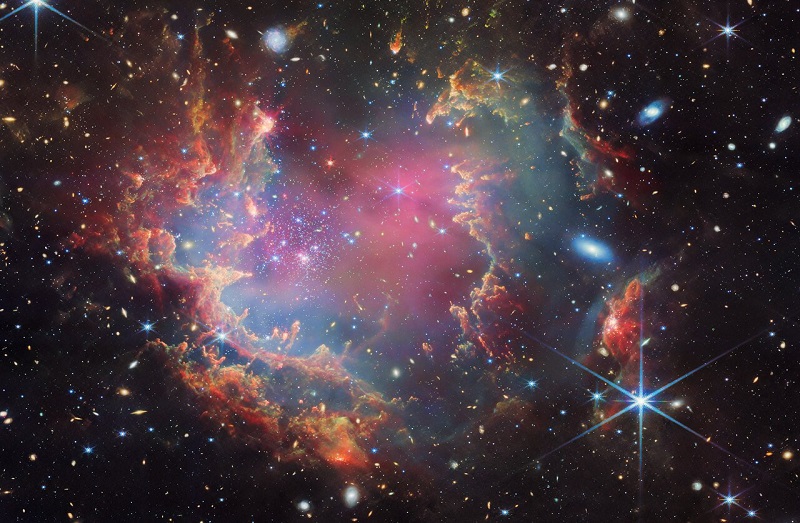The supermassive black hole in the heart of the Milky Way Galaxy, Sagittarius A*, constantly emits flares like fireworks. Observation from the James...
Vous n'êtes pas connecté
- English
- Français
- عربي
- Español
- Deutsch
- Português
- русский язык
- Català
- Italiano
- Nederlands, Vlaams
- Norsk
- فارسی
- বাংলা
- اردو
- Azərbaycan dili
- Bahasa Indonesia
- Հայերեն
- Ελληνικά
- Bosanski jezik
- українська мова
- Íslenska
- Türkmen, Түркмен
- Türkçe
- Shqip
- Eesti keel
- magyar
- Қазақ тілі
- Kalaallisut ; kalaallit oqaasii
- Lietuvių kalba
- Latviešu valoda
- македонски јазик
- Монгол
- Bahasa Melayu ; بهاس ملايو
- ဗမာစာ
- Slovenščina
- тоҷикӣ ; toğikī ; تاجیکی
- ไทย
- O'zbek ; Ўзбек ; أۇزبېك
- Tiếng Việt
- ភាសាខ្មែរ
- རྫོང་ཁ
- Soomaaliga ; af Soomaali
 Maroc - THEPARADISE.NG - A La Une - 19/Feb 11:50
Maroc - THEPARADISE.NG - A La Une - 19/Feb 11:50
Milky Way’s central black hole constantly bubbles with light
Astronomers using NASA’s James Webb Space Telescope (JWST) have taken a detailed look at the supermassive black hole at the center of our Milky Way, called Sagittarius A*. They found that the swirling disk of gas and dust around it constantly emits flares. These flares vary in brightness and duration: some last just seconds, while others are bright eruptions happening daily, with even fainter flickers surging for months. This activity helps physicists better understand black holes and their interactions with their surroundings. Farhad Yusef-Zadeh from Northwestern University led the research, observing Sagittarius A* multiple times in 2023 and 2024. They Read Full Article At: Milky Way’s central black hole constantly bubbles with light
Articles similaires
What’s Going On with Sagittarius A? JWST Just Found Something Big!
Future Space The James Webb Space Telescope (JWST) just captured Sagittarius A—our Milky Way’s supermassive black hole—flaring like never...
Newsdeck: Webb telescope observes violence around Milky Way’s central black hole
WASHINGTON, Feb 18 (Reuters) - NASA's James Webb Space Telescope is providing the best look yet at the chaotic events unfolding around...
What’s really inside a black hole? Quantum computing sheds new light
Researchers at the University of Michigan, led by Enrico Rinaldi, have discovered through quantum computing that black holes might be storing...
Witnessing the birth of planets: Webb provides unprecedented window
An international team of researchers, including those from the University of Michigan, have used the James Webb Space Telescope (JWST) to witness the...
Could a climate megaproject cloud Chile's unparalleled views of universe?
by Paulina ABRAMOVICHAs night falls on the Atacama desert in northern Chile four giant telescopes turn their gaze towards the star-strewn heavens.The...
Many questions, few answers
It has been a very strange start to 2025. Just six weeks in and we have been presented with a host of developments that confound our fragile...
Fluffy molecular clouds formed stars in the early universe
Stars form in Giant Molecular Clouds (GMCs), vast clouds of mostly hydrogen that can span tens of light years. These stellar nurseries can form...
Most Powerful Cosmic Neutrino Detected Under Mediterranean Sea
Scientists have detected a tiny, ghost-like particle called a neutrino with record-breaking energy using an underwater observatory near Sicily. This...
Scientists Discover Largest Structure in the Known Universe
Scientists have discovered the largest structure in the known universe, Quipu, about 1.3 billion light-years wide. The structure was named after the...
Les derniers communiqués
-
Aucun élément






